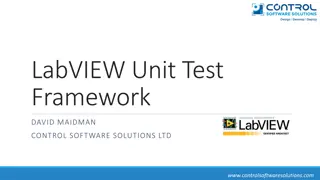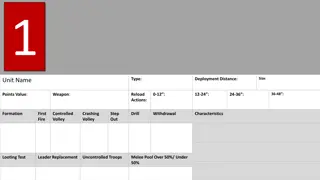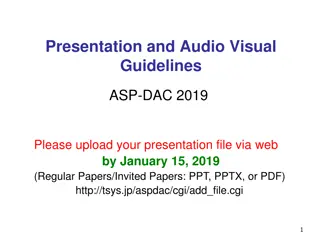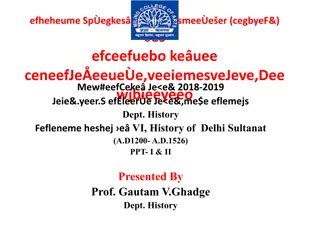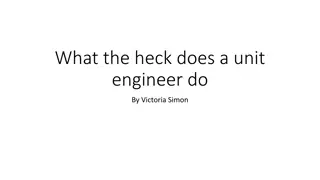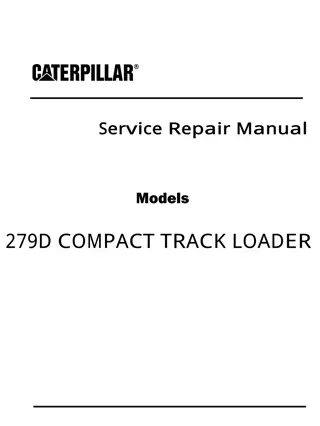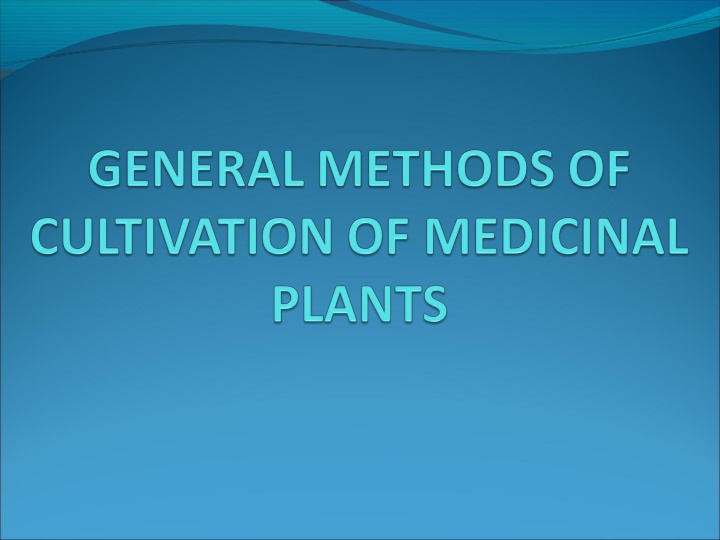
Plant Propagation Methods, Advantages, and Disadvantages
Explore the methods of plant propagation including sexual and asexual methods, the advantages and disadvantages of each technique, and its impact on plant growth and cultivation. Learn how cultivation affects the quality and purity of medicinal plants, providing insights into the commercial aspects and storage considerations.
Download Presentation

Please find below an Image/Link to download the presentation.
The content on the website is provided AS IS for your information and personal use only. It may not be sold, licensed, or shared on other websites without obtaining consent from the author. If you encounter any issues during the download, it is possible that the publisher has removed the file from their server.
You are allowed to download the files provided on this website for personal or commercial use, subject to the condition that they are used lawfully. All files are the property of their respective owners.
The content on the website is provided AS IS for your information and personal use only. It may not be sold, licensed, or shared on other websites without obtaining consent from the author.
E N D
Presentation Transcript
PROFILECOVERING NAME OF THE PLANT SYNONYMS SOURCE AND FAMILY GEOGRAPHICALSOURCE CULTIVATION &COLLECTION PLANT PRODUCTION PREPARATION OF CRUDE DRUG FOR MARKET MORPHOLOGY(OR)MACROSCOPIC CHARACTERS MICROSCOPICAL CHARACTERS CHEMICALTEST THERAPEUTIC & PHARMACEUTICALUSE COMMERCIAL VARIETIES, STORAGE.
ADVANTAGES OFCULTIVATION It ensures quality and purity of medicinal plants. Collection of crude drugs from cultivated plants gives a better yield and therapeuticquality. Cultivation ensures regular supply of a crudedrug. The cultivation of medicinal and aromatic plants also leads to industriialisation toa greater extent. Cultivation permits application of modern technological aspects such as mutation, polyploidy andhybridisation.
DIS ADVANTAGES OFCULTIVATION The high cost of cultivation drugs as compared to wild source and losses due to ecological imbalance such as storms, earthquakes, floods, droughts etc are major cultivation. disadvantages of
METHODS OFPROPAGATION SEXUALMETHOD ASEXUALMETHOD
Advantages of Sexual Propagation :- This is very simple and easy method of propagation. Some species of trees, vegetables which cannotbe propagated by asexual means should be propagated by this method. E.g. Marigold, Tomato etc. Hybrid seeds can be developed by this method. New variety of crops are developed only by sexual method ofpropagation. Root stocks for budding and grafting can be raised by this method. The plants propagated by this method are long lived and are resistant to waterstress. ornamental annuals and Papaya,
Cont Transmission of viruses can be preventedby sexual method. Seed can be transported and stored for longer time for propagation. Disadvantages ofsexual propagation : Characteristics of seedling propagated by this method are not genetically true to type to that of their mother plant.
Conti Plants propagated by sexual method requires long period forfruiting. Plants grow very high, so they are difficult for intercultural practices like spraying, harvesting etc. The plants which have no seeds cannot be propagated by this method. E.g. Banana, fig, Jasmine, Rose etc
BROADCASTING In this method the seeds are scattered freely in well prepared soil forcultivation. The seeds only needraking. If they are deeping sown or covered by soil. Necessary thinning of the seddling is done by keeping a specific distance Examples: isapgol linseed, sesame.
DIBBING When the seeds of average size and weight are available. They are sown by placing inholes. Number of seeds to be put in holes vary from 3 to 5 Depending upon thrvitlity.
MISCELLANEOUS Many a times the seeds are sown in nursery beds. The seedling thus produced are transplanted to farms for futher growth. Such as cinchona, cardamom, clove,etc.
Advantages of Asexual propagation The horticultural crops which donotproduce viable seeds are propagated by vegetativemethod. Most of the important fruit crops are cross pollinated and are highly heterozygous. When propagated through seeds, the progenies shows large variation, so vegetative propagation is remedy for thesecrops. The asexual propagation method gives true to type plants. The vegetative way propagated plants bear fruits early. In case of fruit crops where root stocks are used, the root stocks impart insect or disease resistance to the plant.
Cont Vegetative propagation helps to alter the size of the plant. i.e. dwarfing effect. This helps for spraying, intercropping & harvesting of crops easy and economical. By grafting method different variety of fruit cropcan be grown &harvested. Inferior quality fruit plants can be converted into good quality plants. By means of bridge grafting a repairingof injured plants can be done.
Disadvantages of the vegetativ e propagation: By vegetative propagation new variety can not be developed. It is an expensive method of propagation and required specialized skill. The life span of vegetatively propagated plants is shortas compared to sexually propagatedplants. As all the plants are homozygous the whole plantation may get attacked by a particular pest or disease. Viral diseases could be transferred through vegetative parts.
PREPARATION AND TYPEOF NURSARYBEDS FLAT BED METHOD RAISED BED METHOD RIDGES AND FURROW METHOD RINGS AND BASIN METHOD
(B)ARTIFICIAL METHOD OF VEGETATIVE PROPAGATION CUTTING LAYERING GRAFTING
CUTTING STEM CUTTING ROOT CUTTING LEAF CUTTING LEAF BUD CUTTING
LAYERING SIMPLE LAYERING SEPENTINE LAYERING AIR LAYERING MOUNT LAYERING TIP LAYERING
GRAFTING WHIP GRAFTING TONGUE GRAFTING SIDE GRAFTING STONE GRAFTING
(C)ASEPTICMETHOD TISSUE CULTURE










